Posted 1:06 p.m. Friday, Jan. 17, 2020
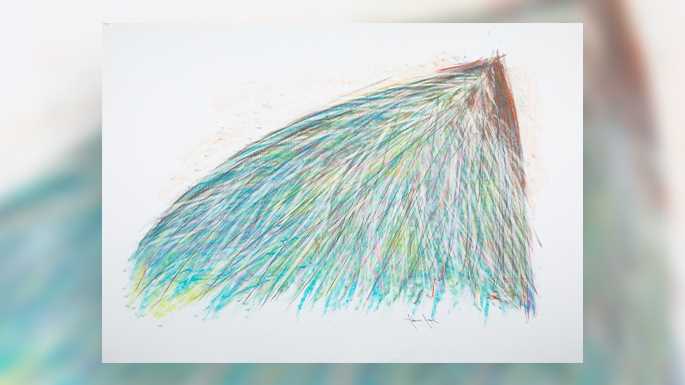
Internationally-acclaimed artist Truman Lowe’s works return to UW-La Crosse for exhibition Jan. 31-Feb. 21.
Internationally-acclaimed artist Truman Lowe’s works return to UW-La Crosse for exhibition Jan. 31-Feb. 21
Artist Truman Lowe had a love for water — whether floating out on it in a canoe or using his artistic talent to replicate its quiet stillness or rushing movement.
It is fitting that the next exhibition of Lowe’s art is at a place where the waters of three rivers meet — in La Crosse. The city is also home to Lowe’s alma mater, UW-La Crosse, a place close to his heart, according to family and friends. Lowe, an internationally-acclaimed artist, died in March 2019 at age 75.
The exhibition celebrating his life and work runs Jan. 31-Feb. 21 at UWL. An opening reception will be from 4-6 p.m. Friday, Jan. 31, at University Art Gallery in the Center for the Arts, 333 N. 16th St.
Jo Ortel, a co-curator of the exhibit who also wrote a book on Lowe, will give a public talk about Lowe’s art at 6 p.m. Thursday, Jan. 30, in Annett Recital Hall, Center for the Arts. Coffee will be served in the gallery after her talk. Ortel will suggest the depth of Lowe's artistic exploration of rivers and streams, 'the source' of his fascination, and the way moving water became a means of making sense of the world.
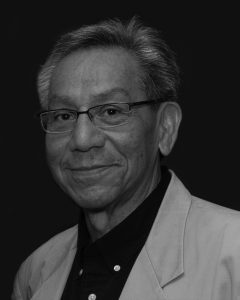
The exhibit’s title, “Changing Currents,” comes from something Lowe wrote on a sketchpad and exhibition co-curators, Ortel and Truman’s wife, Nancy Lowe, found while going through his collections. Ortel says Truman frequently created art focused on water, rivers and streams. The exhibition will focus on that work, as well as drawings of Native American Ho-Chunk artifacts and Woodland Indian objects.
A 1969 graduate of UWL, Truman became a professor in the School of Education’s Art Department at UW-Madison. He also grew his reputation internationally as an artist throughout his career — exhibiting worldwide with prominent accomplishments such as a sculpture in the Jacqueline Kennedy Garden at the White House and being named the first curator of contemporary art for the Smithsonian National Museum of the American Indian. He was known for his originality and contemporary take on Ho-Chunk art.
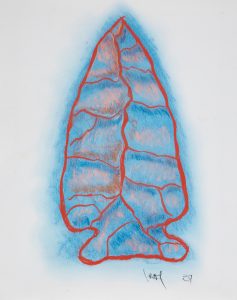
“He is a Wisconsin treasure, a Ho-Chunk treasure and an American treasure as far as I’m concerned,” says Ortel, who wrote a book on Truman, “Woodland Reflections: The Art of Truman Lowe.”
Nancy Lowe says his fascination with creating water likely comes, in part, from growing up near the Black River. Later in life, the two frequently went canoeing together.
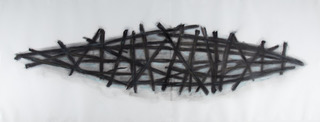
“Just being out on water in a silent way was something we both enjoyed,” notes Nancy. “And we did that as long as we were able to.”
Ortel recalls Truman saying that sitting in a canoe was like being suspended between the sky and the Earth. She hopes the show will be a haven for viewers, bringing the kind of peace Truman found in nature.
“There is something so peaceful and calm about Truman’s work,” says Ortel. “It’s not political. It’s not angry. There is a sense of tranquility that I think a lot of people recognize.”
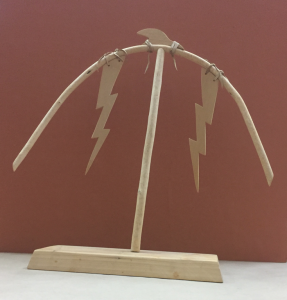
In addition to his art, Truman’s personality left an impression.
“He was certainly one of the most genuinely nice men I’ve known in my life,” says Bill Gresens, ‘69, a retired UWL staff member who first met Truman as a UWL student in the 1960s.
Al Trapp, former president of the UWL Foundation, recalls Truman’s sense of humor, smile and “very warm and kind personality.”
Truman was also a great friend to UWL and always happy to share his time and talents with the university, explains Trapp. Truman returned to UWL for an exhibition of his work at the University Art Gallery in spring 1991, titled “Streams.” As part of the exhibition, he sold prints of his work to raise funds for Truman Lowe Scholarship Fund for minority students and the Hebberd endowment, according to a fall 1991 article in the Alumnus magazine. Truman was named a UWL Graff Distinguished Alumni Award Recipient in 1992, a Parker Distinguished Multicultural Alumni Award recipient in 1999 and served on the UWL Foundation Board.

Nancy Lowe says Truman would be happy to know that an exhibition of his work will be returning to UW-La Crosse.
La Crosse has always remained one of his favorite places, she says. “When they asked us to do a show in La Crosse, I thought, yes, that is exactly what Truman would like.”
